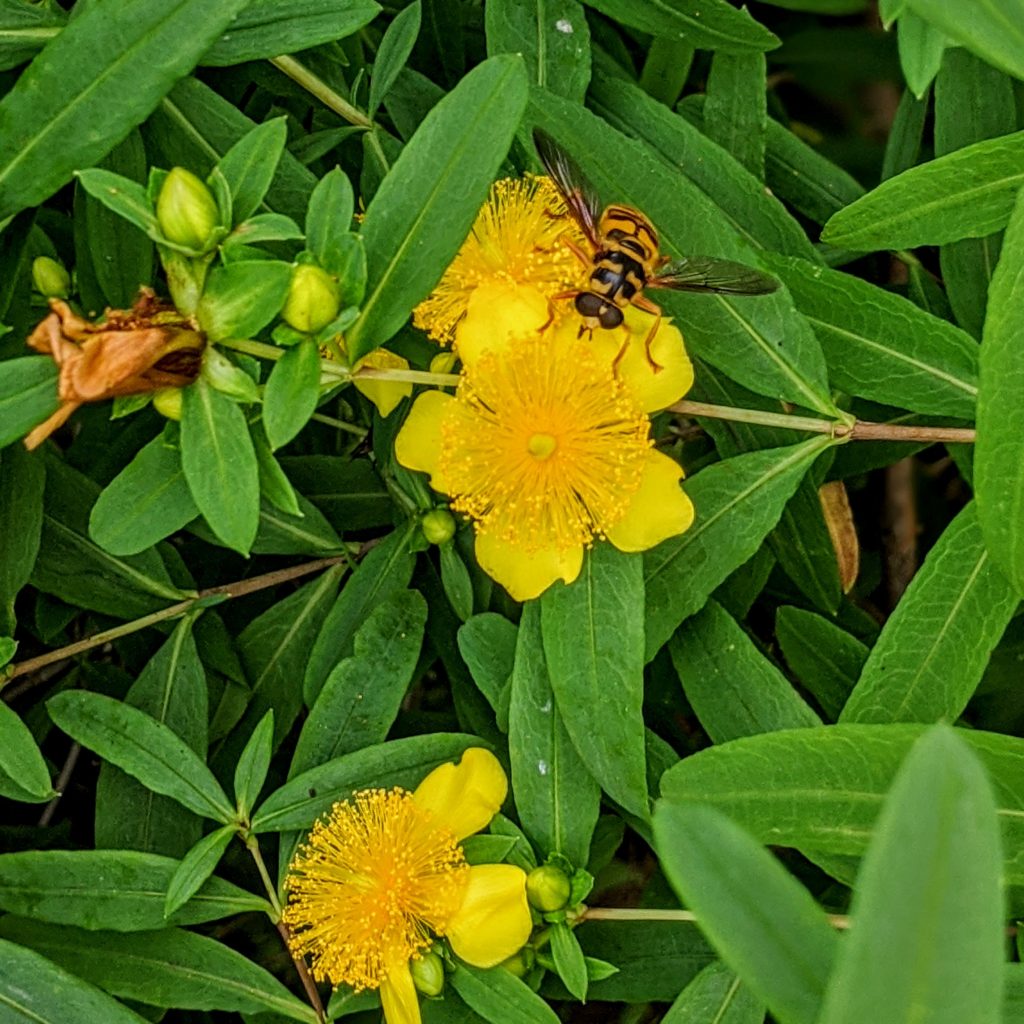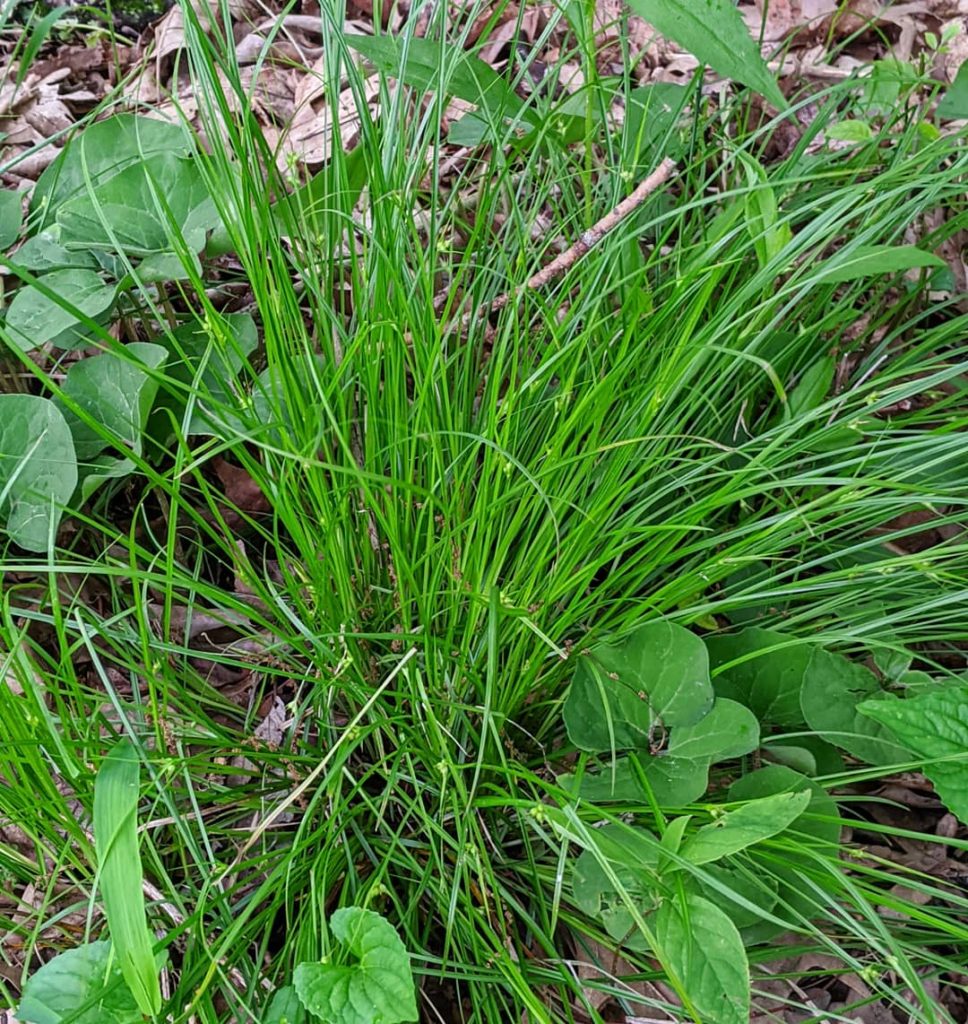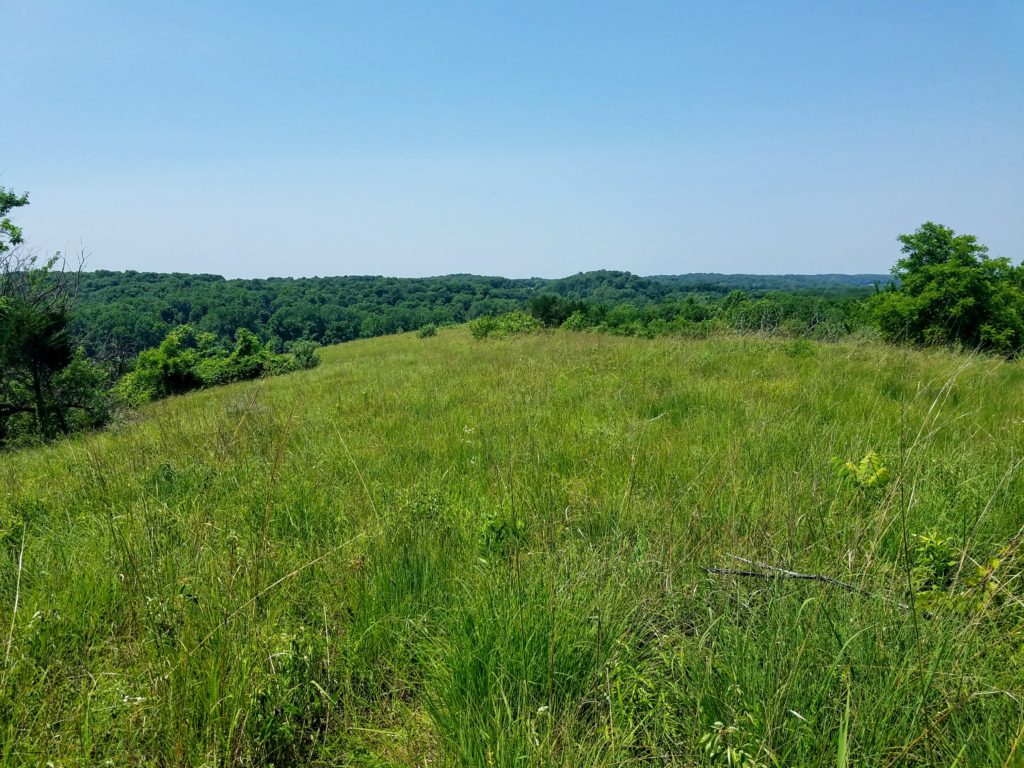Plant Profiles: Lindera Continued, Shrub Communities, and CO2
- Henry “Weeds” Eilers
After recent burns and while getting my exercise by cutting down and piling brush at the Shoal Creek Conservation Area, I checked the few plants of Spicebush that had survived that devastating 2012 drought. Though mostly small, 3’ or less, they all indicated considerable age by their sizable basal crowns. The largest was only 5’, with over 30 smooth and slender canes. I cut a piece of one and it was so pliable that it held a knot. Might Native Americans have used it in making basketry? It would have made for a delightfully fragrant container too. I could not find any references to that on the internet. There where however many references to its medicinal and culinary values. For instance, the berries make a fine substitute for Allspice. Hear that, you foragers! But you would have to beat the birds to them as they definitely prefer these to berries of our invasive species. Several sites recently featured winter botany – buds and bark. One bark sample with a very striking texture was a real mystery to me. Surprise, it was of Lindera. A personal inquiry indicated that it was the 3” trunk of a 12’ tall individual. So, is it a shrub or a tree? Well, the species can actually top 20’. That should certainly qualify it for ‘treedom’. No surprise therefore that it is delightfully described in ‘Native Trees for North American Landscapes” by the famous local author Guy Sternberg.
We have well over 25 woody understory native species in our conservation area. Some are very uncommon today; some have become a bit weedy. That assessment is based on our evaluation at this point in time. Each species has its own fascinating history. They range from a set of subshrubs like Leadplant, Carolina Rose, Shrubby St. Johns-wort to Dogwood, Hop Hornbeam and Sassafras. The latter can graduate to trees of considerable size, while the former act more like forbs.

Overarching all is trying to puzzle out their place collectively and individually in the presettlement woodland landscape. How do we manage for that original diversity today, after 200 years of destructive influences? Few things in nature are straight forward and therefore, what we call restoration, remains very much a work in progress.
A considerable amount of the species diversity is in the ground layer. With fire management many of the above woody components, at least temporarily, become a part of it. Grasses, graminoids and forbs are a permanent part of that and often require an open woodland structure and fire for their continued existence. They are truly the skin of the earth and have suffered more than other elements from past land use practices. I am particularly fascinated, not only by the diversity of intact natural systems, but increasingly their contribution to holding the soil in place.

Especially large looms their potential in ‘socking away’ large amounts of Carbon. Who would have imagined that only a few years ago? We have all heard of the rainforest sequestering large amount of that, but prairie and woodlands? We know now that acre for acre grasslands can equal that. Furthermore, they put it in the ground where the Carbon accumulates more permanently as herbaceous root systems are replaced in a never-ending cycle. That makes this ground layer so important in woodland systems.
Several recent PBS programs presented various engineering solutions for our rise in atmospheric CO2, such as scrubbing it from the air. All these schemes had serious shortcomings. By far the most practical and cost-effective approach lies in managing our natural lands so they maximize C sequestration and storage. Best estimates calculate the annual Carbon offset at almost 50% for our country if we ramp up to include all public and private grasslands, wetlands, woodland and forest systems in the eastern US. I believe these estimates do not even include marginal and abandoned lands that might be used for ‘Carbon farming’. We all pollute, we all contribute to the climate problems and therefore we all need to contribute to the solution to make it happen. Not only would we remove C from the air, we would build up seriously depleted soils, hold water on the land and so much more. Grandiose engineering solutions have always fallen short of their promises. Working with nature, rather than against it, as we have done regrettably for so long, might just surprise us with its Carbon offset potential and a host of other benefits – and all at a far lower cost to begin with.
Some of our readers may know far more about this and how to make it happen. It would be good to hear from them!

